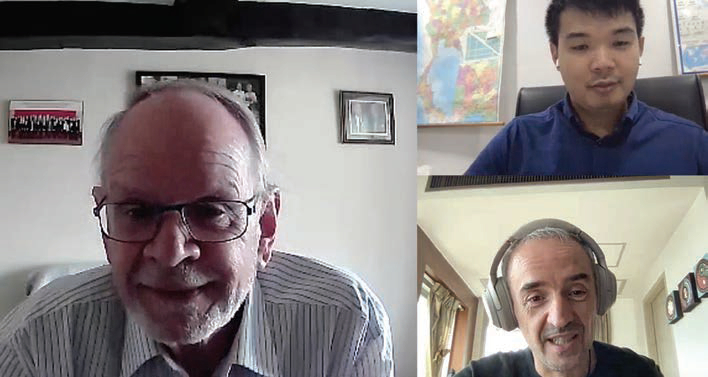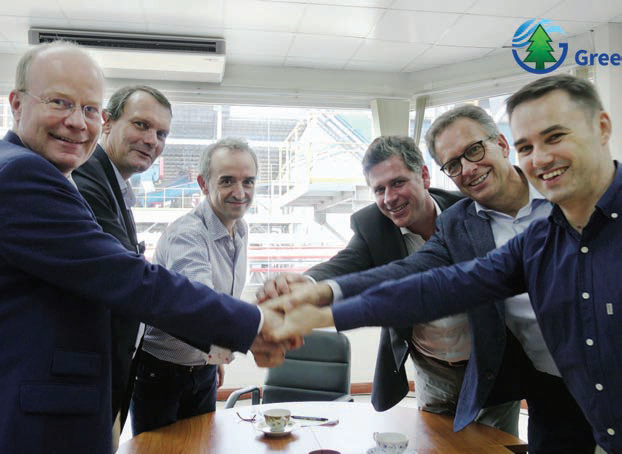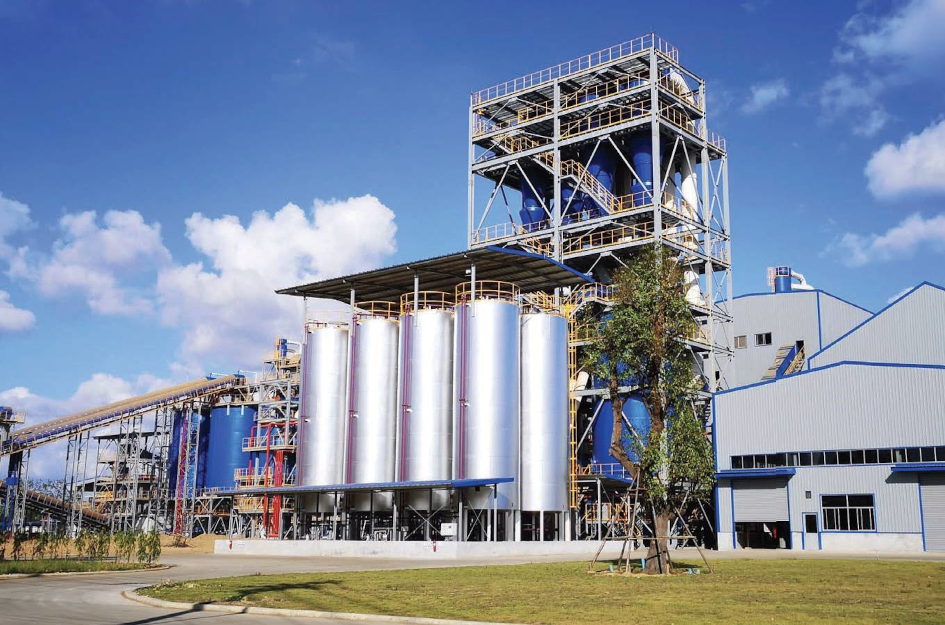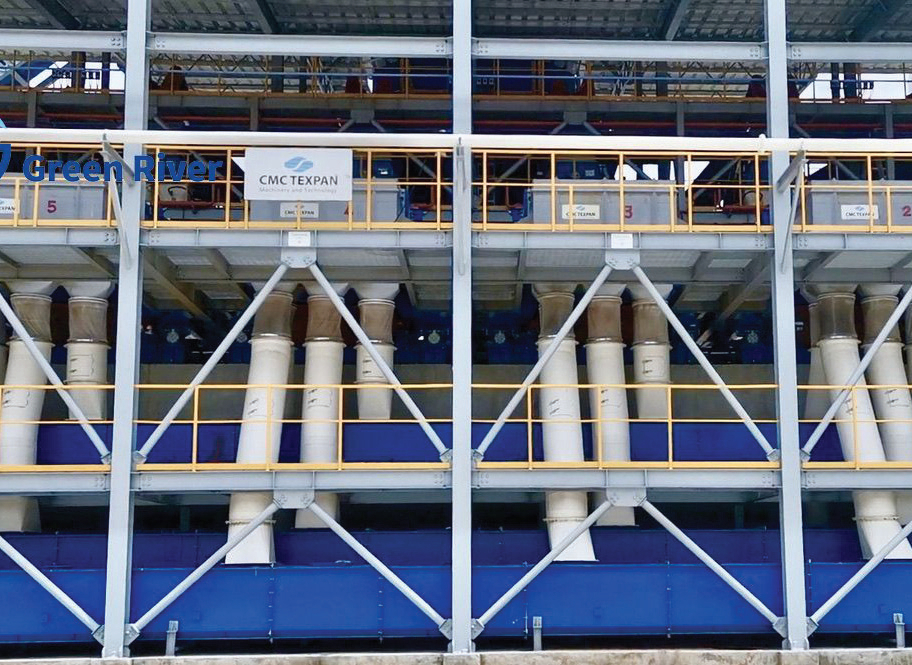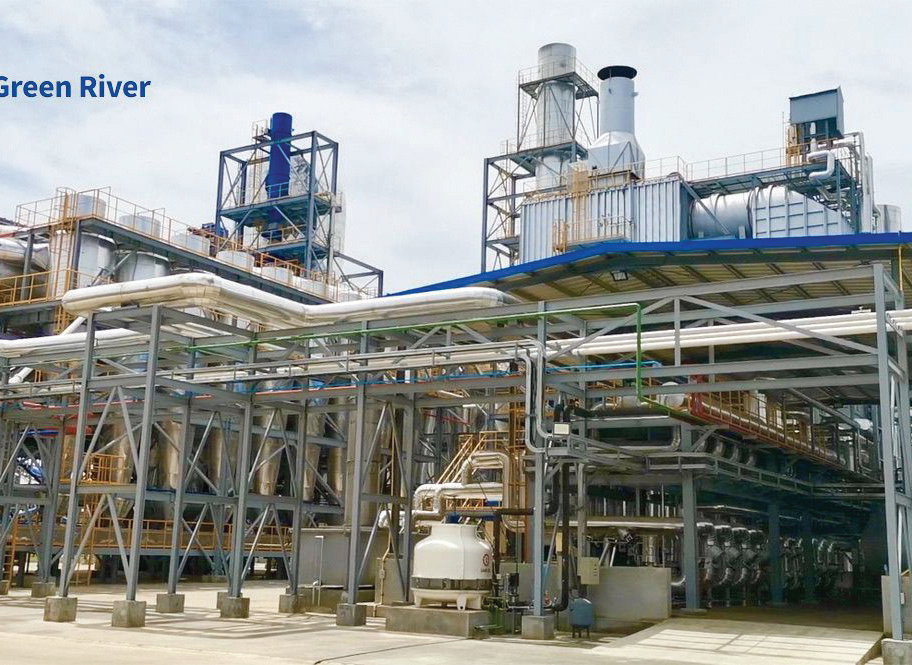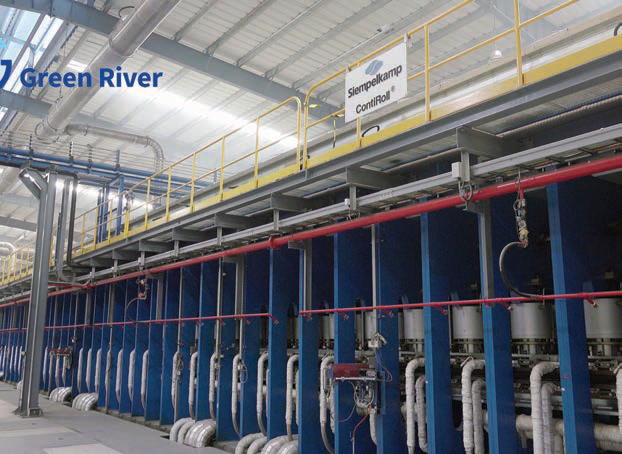Particleboard line number three for green river
28 May 2021Green River Panels (Thailand) Co Ltd started up its third production line during the global pandemic. WBPI consulting editor Mike Botting interviewed the company’s Alex Hsieh and Konstantinos Karakolidis
Green River Panels produced its first commercial particleboard panels in September 2008.
It opened its second line in 2015 and has just started up its third, in the middle of the coronavirus pandemic.
Green River Panels (Thailand) Co Ltd was established in 2004 by three Taiwanese entrepreneurs, David Huang, Hubert Hsieh and Jeff Lee.
Having decided to seriously consider entering particleboard production, Mr Huang and Mr Hsieh visited the Ligna exhibition in Hannover, Germany in May 2005 to investigate suppliers of the machinery available for such a project. Detailed quotations for continuous press lines were subsequently obtained from Siempelkamp, Metso Panelboard and Dieffenbacher and in 2006, Green River Panels Thailand Co Ltd placed a contract with Dieffenbacher of Eppingen, Germany for a 20m-long CPS continuous press and its associated particleboard production equipment.
Construction on the site that Green River Panels already owned in Bangklum, near Hat Yai in southern Thailand, began in 2006.
While Dieffenbacher supplied the ‘heart’ of the line, much of the ancillary equipment came from Chinese suppliers.
There ensued a steep learning curve for the company as it had never produced a panel product before. Nevertheless, the first board was produced on December 19, 2007.
The wood raw material delivery system employed for the first line was cumbersome and inefficient and was one of the first areas to be improved in an ongoing upgrading of the whole mill, once regular production was established.
The Chinese-made gluing system was also subsequently replaced with one from IMAL of Italy.
The designed capacity of the line was 150,000m3 per year, but that is definitely an historic figure now, as we shall see later.
Following the success of its first particleboard line, in 2014 Green River Panels ordered a second, similar line, again from Dieffenbacher, to be installed adjacent to line one in Bangklum.
This line employed a 28m-long CPS press and Dieffenbacher’s scope of supply included forming, with a four-head dispersion unit using wind spreader heads with an integrated roller screen; a drum dryer; and a twin diagonal cross-cut saw. The German supplier also provided assistance with optimisation of the plant.
This second line had a designed capacity of 300,000m3 per year. As mentioned earlier, Messrs Huang and Hsieh were completely new to panel production in general, and particleboard in particular, when they started their first particleboard venture back in 2007.
However, they employed the services of some highly-experienced consultants who helped with the setting up and optimisation of the first two lines.
One of these consultants was the well-known regional industry expert, with particular experience in the South-east Asian panel business, Australian-born Bob McIntyre.
“Bob helped us greatly to improve our business management using his long experience in this industry,” said Mr Hsieh when I interviewed him in 2013. “We are also very lucky to have had the services of Herbert Hermann Karl Fahlbusch as project manager during the development of this project. Working together with our staff, he helped us to achieve a 40% increase in output in only four years – and that was quite an achievement.”
Green River also employed the part-time services of another German-born consultant, Florian Henkenhaf, who specialised in the production of particleboard.
With an eye to the future, in 2012 Messrs Huang and Hsieh decided to bring a younger man on board in the management team.
Konstantinos Karakolidis (widely known in the panel industry as ‘Kosta’) has a consultancy background in the production of particleboard and other panel products and joined the company as deputy to Mr Huang.
Having assisted in the optimisation of the original two lines at Bangklum– and overseen the establishment of a third line recently in Trang (more of which later) – Kosta left Green River, in very friendly separation, on March 31, 2021, to take up a new role with German machinery supplier Siempelkamp.
Optimisation of both lines one and two has been ongoing over the years and today line one has an annual capacity of 300,000m3 – twice its original designed capacity – and line two has risen from 300,000m3 to 450,000m3 per year.
Some major upgrading was carried out to the second line in 2017 to achieve these impressive increases. This involved increasing the flaking capacity with some second-hand Pallmann flakers, giving a total of six flakers serving the second line.
The company also added a new screening system by Pal Srl of Italy (part of the IMALPAL Group of companies).
The two lines were also connected to an automated Lukki Raw Board Storage System by Dieffenbacher, which offers a fully automatic storage system for panel production. This includes master panel storage for main production prior to finishing; downgraded panels after sanding; and protection panels for finishing lines. It also has an inventory management system with real-time stack information and inventory reports. This system alone provided a significant uplift to the plant’s efficiency.
Green River also purchased a shortcycle laminating line from Wemhöner (headquartered in Herford, Germany) to add value to its production.
This plant has a capacity of 120-150,000m3 a year, processing two six feet by eight feet master panels per cycle. This press line was supplied by Wemhöner’s factory in Changzhou, China.
A THIRD LINE IS BUILT
Following the success of its first two lines in Bangklum, Green River Panels decided to go for a further major expansion of its particleboard capacity in Thailand with the construction of a third line.
A new location was selected for this venture, in Trang, 176km north-west of Hat Yai/Bangklum.
“This is exactly where the most dense area of rubberwood plantations are,” explained Mr Karakolidis when I interviewed him and Alex Hsieh via Microsoft Teams just before he left Green River’s employ.
“There was no more room for development at Bangklum and the logistics at Trang are very good. The addition of our location in Trang was a strategic decision both for availability of raw materials and logistics,” said Mr Karakolidis.
“We already have sales activities in Malaysia, Indonesia, China and Korea. The new line will allow us to further expand our market share in Vietnam, India and the Middle East.
“The new line provides a better connection with India and gives us the opportunity to increase our customer portfolio because we’ll have more capacity available.”
The developing nations of Asia make the region a growing market, however, it is still subject to supply and demand fluctuations. Mills dependent on rubberwood for the raw material are also affected by rubber prices. These market swings were important in Green River’s decision to build such a large mill.
“A line of this size helps to stabilise performance, not only in terms of capacity but also financial performance. This was a key factor for us in choosing a big line,” said Mr Karakolidis.
“The location gives us access to another port at Songkhla and the proximity of the rubberwood plantations to our Trang site reduces wood raw material transport costs,” he explained. “There is also not too much competition for the resource at the moment, although we will have to see what happens when demand post-Covid-19 returns to 100%.”
In a departure from its choice of Dieffenbacher for lines one and two, the continuous press line for the third Green River particleboard line was purchased from Siempelkamp of Krefeld, Germany.
It is a Generation 9 ContiRoll and at 50.4m long is the largest continuous particleboard press in Asia and also Siempelkamp’s first 9th generation ContiRoll in the region.
The press comes with a measuring frame that feeds back the absolute press gap by measuring the upper and lower hot platen position. Siempelkamp says this combination provides the lowest possible thickness tolerances on the finished raw board.
Another innovation provided is the ContiRoll Ecodrive system which is said to enable energy savings from 7-14%.
Siempelkamp’s subsidiaries supplied all major components of the line: Büttner for the energy plant; Pallmann for chipping and flaking; CMC of Italy for screening and sifting, as well as for glue preparation, dosing and blending.
It has what is said to be Asia’s largest energy plant, with a furnace capacity of 95MW, as well as Asia’s largest drum dryer, with a 7m diameter and a length of 36m.
Thus pressing to storage was all supplied by the Siempelkamp Group, but separate packages were negotiated with each sub-supplier and bought separately, explained Mr Karakolidis, while overall project management was by Siempelkamp and Green River’s experienced staff.
Total cost of the Trang project was what seems a very reasonable €100m.
“We did all the engineering for outside areas and for the electrical energy,” added Mr Karakolidis.
The first board was produced at Trang in November 2019, but then the Covid-19 pandemic interrupted progress. “We started to produce commercially really in June 2020,” said Mr Karakolidis.
Design capacity of the Trang line is 2,000m3 per day and it is running to that figure, but Mr Karakolidis believes that 3,000m3 is probably achievable. Currently the target is 2,500m3 per day (approximately 770,000m3 per year).
This would take total annual group capacity to around 1.5 million m3 of particleboard, from the three lines.
“Covid was a disaster for us,” admitted Mr Karakolidis. “The commissioning could not be completed, troubleshooting could not be completed, but with remote support from Siempelkamp we did reach a good capacity, though not 100%. Nobody knew where we were heading at that time. It was a very difficult time. Now we want to complete the project but we can’t get the engineers to come [from Germany].
“So now we are waiting. We think we may be able to get the Siempelkamp engineers to come in June/July, so I expect in August or September we will be ramping up to our full capacity. We are now experiencing increased demand so we want to ramp up the capacity.
“Now demand is increasing we are being affected by the third wave [of coronavirus in Europe]. We are being affected by so many things now it is terrible. With the trade war between China and the US, container prices are going crazy.
“Imagine now you have a 40ft container price to Europe of almost €8,000. Before the pandemic it was around €1,500. For China it has now gone from US$150-200 to US$1,100- 1,200. Australia has gone from US$1,500 to US$3,800. That’s really a problem.
“Before Covid came along a lot of capacity was coming on-stream in South-east Asia at the same time. As line 2 came on stream, Allgreen put a big new press in Malaysia. Metro started up its new line in that year too, so that created an over-supply in the market and just as that was improving, Covid came. So it has been a long time when the market is not up to how we saw things developing back in 2013-14.”
Turning to value-adding at Trang, Mr Karakolidis said they have no value-adding capacity at present but have planned and prepared for two laminating lines and have the energy capacity for that.
The mill is located on a 525,000m2 greenfield site and the new line has around 50,000m2 under cover.
“We have an area of land at Trang that is double what we currently use because we plan to add another mill. It will be either particleboard or MDF or OSB, also with downstream capacity. Hubert [Hsieh] has not yet decided which panel type we will produce, or when, but we have the advantage that we can choose how we will grow in the future.”
In terms of markets, Trang is 100% export, said Mr Karakolidis. “We have Malaysia, China, Indonesia, Korea, Vietnam, India, Australia and now we have Japan coming up, with a local partner there.”
Hubert Hsieh’s son Alex has also joined the company more recently.
“Alex is now part of the marketing team to support the downstream side of the business and will soon become part of the management team,” said Mr Karakolidis.
Looking to those future plans for growth, as mentioned, nothing is yet decided about a new panel line of any kind.
“Our first priority now is to get stabilised and to focus on the downstream side, both in-house and with strategic partners,” said Mr Karakolidis.
“We have announced in the press that we are seeking joint venture partners in Asia to speed up the process.”
Green River Panels has an impressive track record of growth from producing its first particleboard panel in 2008 to a potential three-line capacity of 1.5 million m3 today.
Turnover in 2020 was 3.5 billion Taiwanese dollars (TWD).
The company is also mindful of the increasing need to be environmentally aware these days and as Mr Karakolidis told WBPI’s Keren Fallwell in 2018: “Green River Panels is standing by its environmental philosophy and our aim is to protect and preserve nature.
“We are using rubberwood, which comes from plantations and that which cannot be used for solid furniture; and waste from rubber plantations which makes our product ’green’.”
Hubert Hsieh is a very driven man and has plans for an even bigger future for his company. He is also a man who ‘plays his cards very close to his chest’.
We will have to wait and see what exactly those future plans involve, but expect to hear more from Green River Panels in terms of additional panel production of some kind – and an increase in value-added production.
I am guessing that we won’t have to wait very long.
